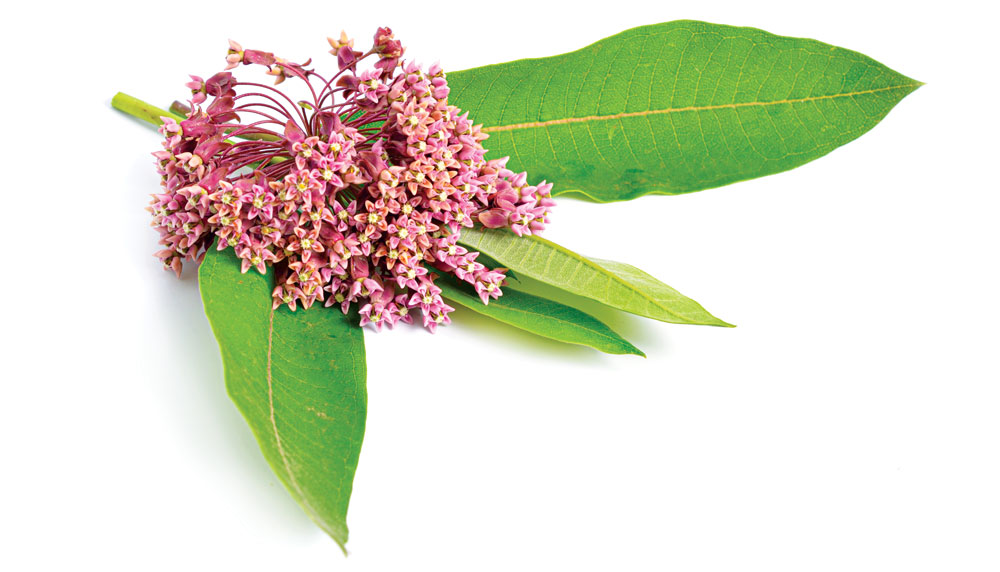This easy-to-find plant provides food, fiber and medicinal benefits.
NAME: MILKWEED (Asclepias syriaca and A. California)
Milkweed is part of the dogbane family (Apocynaceae). Formerly, milkweed had been classified in its own family—the milkweed family (Asclepiadaceae). The genus, Asclepias, contains about 100 species, with about 60 of them found in the United States. Some are found all across North America. About a third of the species are most common in the U.S. West, and the rest are most common in the Eastern states.
DESCRIPTION
This perennial plant grows erect, usually 2 to 3 feet tall (sometimes taller). It is whitish green in color and is usually found in patches.
One of the main identifying characteristics is the thick, milky-white sap that oozes out when the stalk or leaves are broken or cut.
The ovate-to-oblong leaves are opposite or whorled, not toothed at the margins and tapered at both ends. There are obvious central veins or ribs. The leaves measure from 2 to 5 inches long, and their surfaces are softly “tomentose” (covered with densely matted woolly hairs).
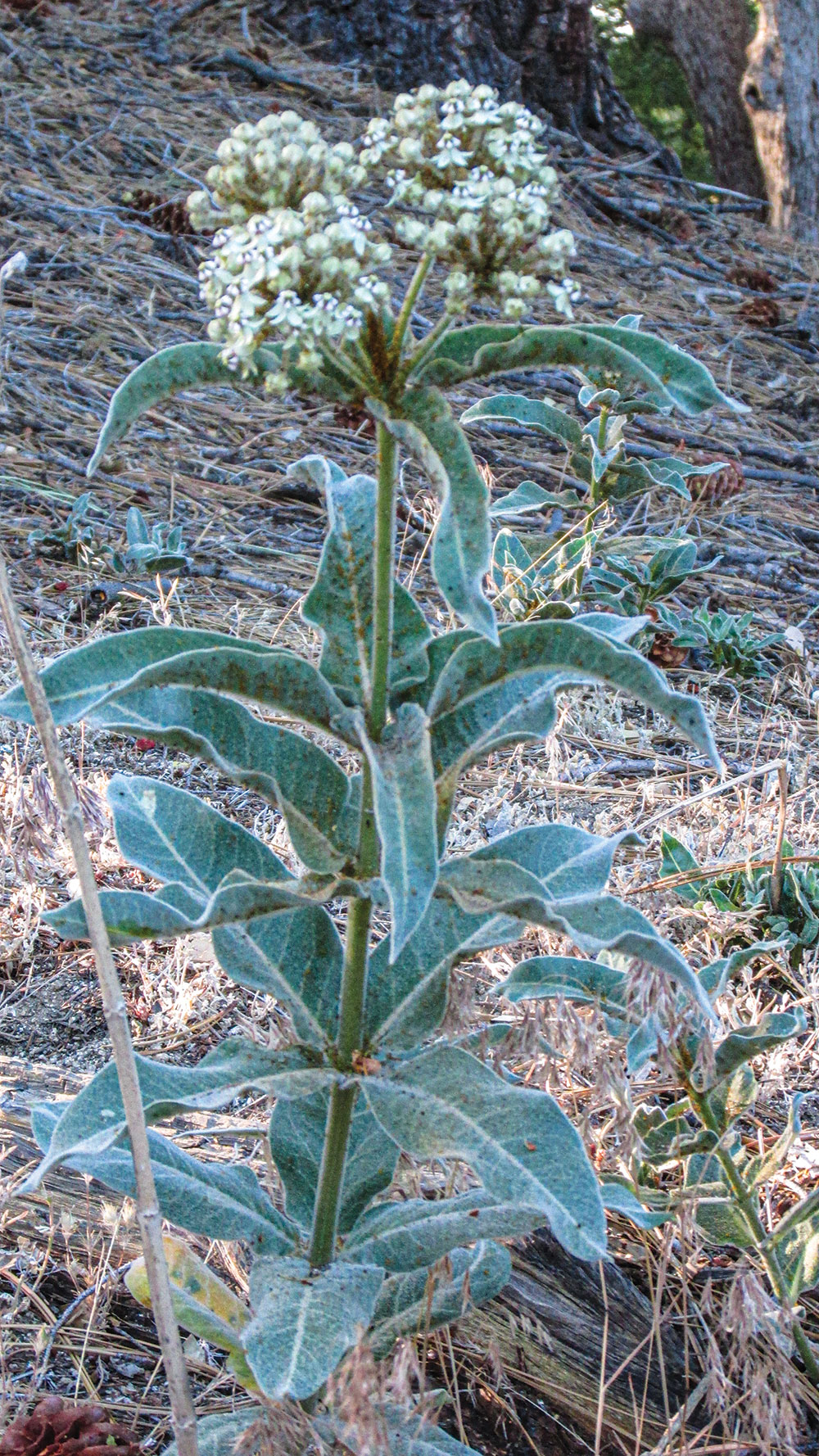
The white, pink or rose/purplish flowers are about ½ inch in diameter and are arranged in umbels. Each flower consists of a five-petaled corolla, and each petal has an erect cowl and inwardly hooked horn. There are five sepals, five stamens and two pistils with a superior ovary.
The blossoms develop into rough, green pods (fruits) about 3 inches long. When the pods mature, they split along one seam, revealing neatly packed seeds. A number of down-like, silky fibers are attached to each seed. These fibers enable the seeds to become airborne and thus scatter, sometimes to great distances.
WHERE FOUND
Milkweed resides in dry fields, hillsides, roadsides, woods, yards, pastures, marshes, deserts, along chaparral trails and waste places. In other words, it’s one of the plants you can find in virtually any environment.
WHEN TO HARVEST/AVAILABILITY
Milkweed flowers from May to July, fruiting in the summer and fall. The shoots are first available in the spring. The flower buds and immature fruits are available in early summer.
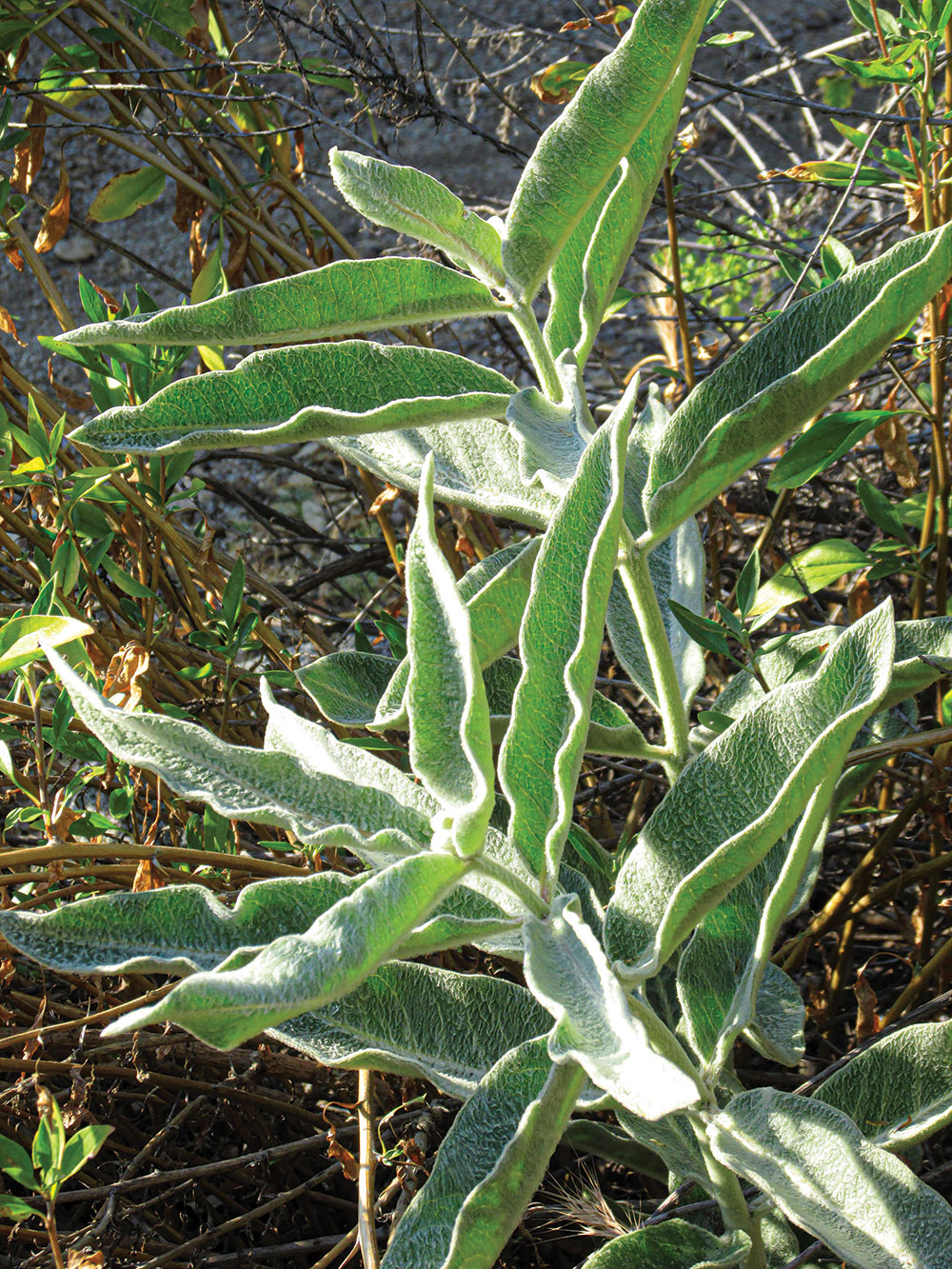
USES
Milkweed’s tender, young shoots (fewer than 6 inches tall) can be eaten. When the plant is older, the leaves and flower clusters are also used for food. Before the silky fibers inside have developed (cut one open and inspect it), the immature seed pods are great in soup or with meat.
Note: All parts of the milkweed must be boiled in water (often at least twice, with a rinsing between boilings) before they are rendered palatable and safe to eat.
PROCESSING
When I first learned about eating milkweed, I was taught to boil it, change the water and then boil it once more before eating it (as I mentioned in the note at the end of the previous section). I’ve done this with the shoots, leaves, flower buds and the immature fruits. This is a safety precaution, because they all contain cardiac glycocides, which can increase the output force of the heart and increase its rate of contractions.
While some people advocate boiling the edible portions just once, I always boil them twice as a precaution.
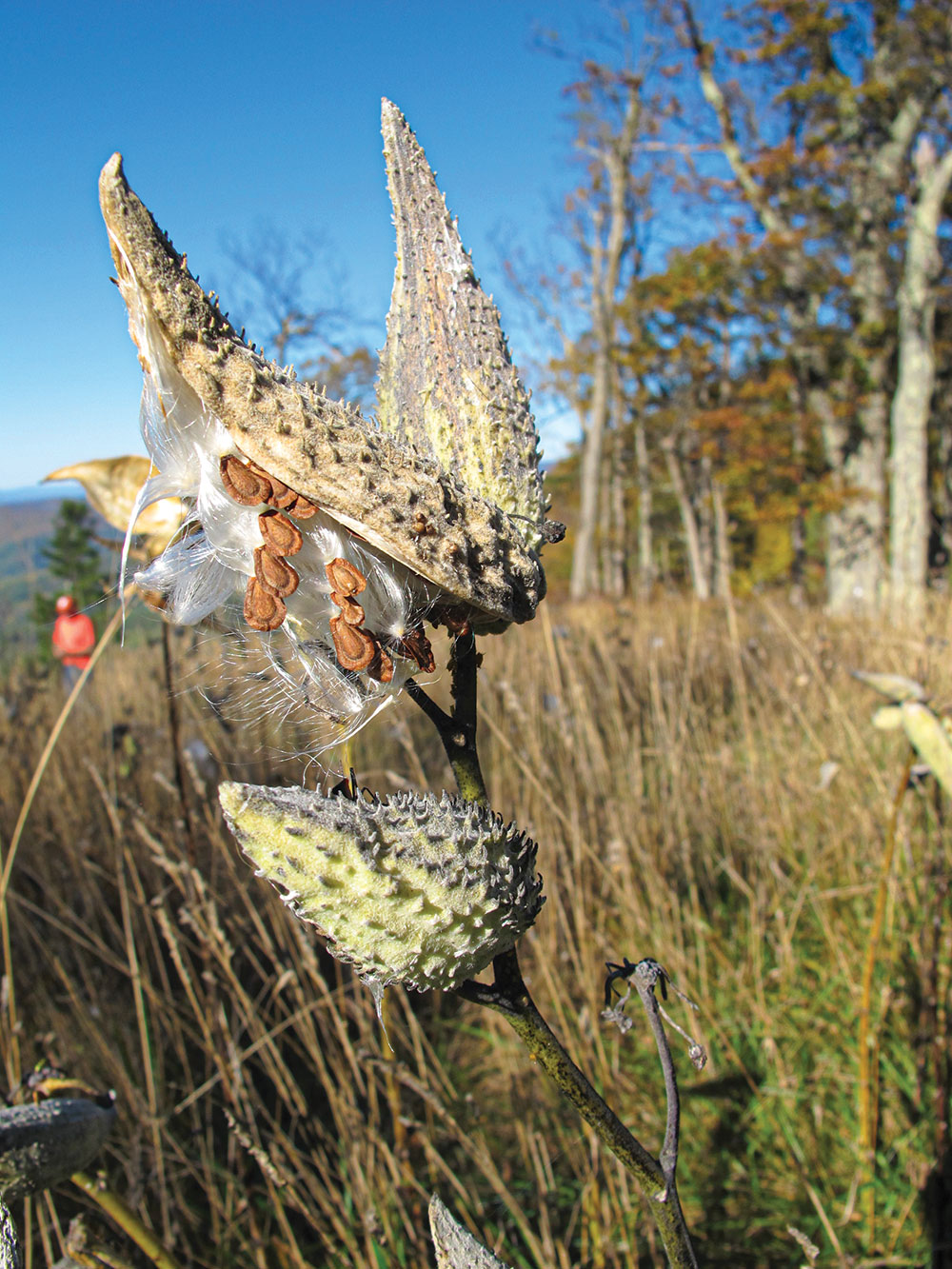
MEDICINE/NUTRITION
The white sap was reportedly used by Native Americans to cure warts by surface application over several consecutive days.
OTHER USES
The silky, down-like filaments (technically called “floss” or “vegetable silk”) attached to the seeds were used by the U.S. Department of Agriculture as a kapok replacement in life jackets and belts, as well as life preservers, because the down will still float while supporting 30 times its own weight. It’s also used as upholstery padding, insulation material and for stuffing pillows.
Fiber obtained from the milkweed stalks can be used to weave such items as rope, sandals and fishing line. This fiber has been used in limited amounts for paper-making and weaving into muslins.
To obtain the fiber, first peel the stalks and then roll them to release the fiber. Southwestern indigenous peoples used these fibers for snares, nets, slings and other items.
In addition, milkweed sap was used by some Native Americans as a type of chewing gum. The sap was obtained from the stalks and stems and heated until it solidified. Alternatively, it was allowed to stand until it hardened.
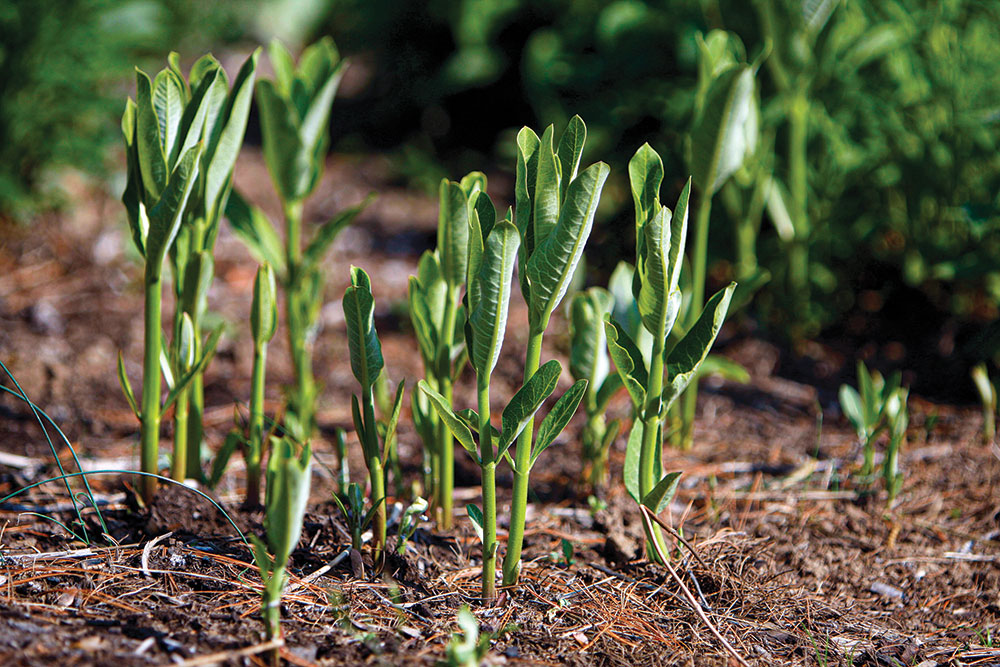
ADVICE FOR GROWING
Milkweed is easy to grow from seed, and it’s commonly sold at native plant nurseries. In fact, it’s usually sold as a way to support butterflies, whose larvae feed on the milkweed plants.
CAUTIONS
Once again, milkweed should never be eaten uncooked, due to the resins in the leaves and stems. Ingestion of raw milkweed can cause stomach and intestinal upsets. Ingestion of A. speciosa—another species of milkweed—has resulted in livestock poisoning, but animals do tend to avoid it. Most milkweed species are generally regarded as toxic to cattle.
There are several species of milkweed across the country, but A. syriaca (common in the East) and A. california (common in the West) are the ones most usually eaten.
DOGBANE MIGHT BE CONFUSED FOR MILKWEED
Milkweed and dogbane are placed into the same botanical family (by most botanists), so they have some obvious similarities. They both secrete white sap, and they can be found in the same environment.
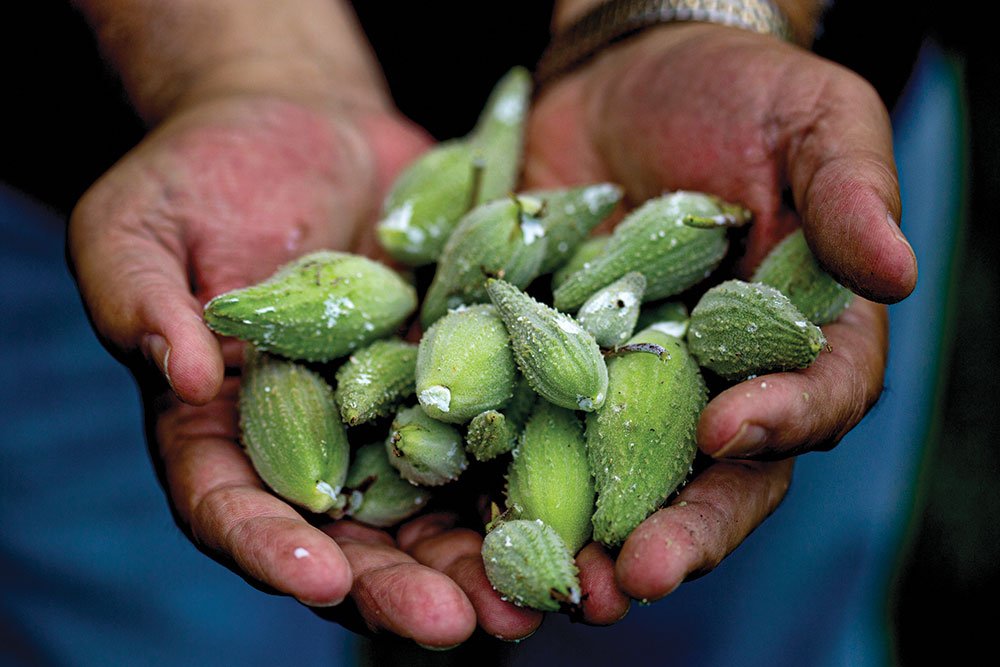
Dogbane is considered toxic to humans. Cymarin, a chemical found in this plant’s roots, was used as a cardiac stimulant and was listed until 1952 in the medicinal text, United States Pharmacopoeia. The milky sap contains cardiac glycosides (a chemical compound that’s derived from a simple sugar and is often of medicinal importance) that have physiological actions similar to digitoxin.
RECIPES
Milkweed Pods
- 12 young, hard milkweed pods
- 1 carrot, grated
- 1 tablespoon butter
- Pepper
Collect the young, tender milkweed pods that haven’t yet begun to mature and go to seed. Once they’re processed—with double boiling—add the grated carrots and let everything cook until the carrots are just slightly done. Season the milkweed pods with the butter and a shake of pepper.
A Tribute to Asclepius
Socrates’ last request was that his friend, Crito, pay a tribute to Asclepius, the god of healing. Milkweed’s genus name is the same as this Greek god of medicine, so it’s only proper to ponder deeply that which heals as you partake of this recipe.
- 2 large, knotty potatoes
- 1 cup wild garlic or wild onion bulbs
- 1 Jerusalem artichoke
- 2 cups young, unopened milkweed flower buds
- ½ cup New Zealand spinach
- ½ cup milkweed leaves
- Pepper to taste
- Butter
Gently boil the potatoes, onions and Jerusalem artichoke in minimal water. When these are tender, add the unopened flower buds and leaves of milkweed. (Remember: All parts of the milkweed must be processed with boiling water, as described in the “Processing” section). Add the New Zealand spinach leaves, and let all the ingredients simmer until tender. Serve with a dash of pepper and a pat of butter. Serves four.


